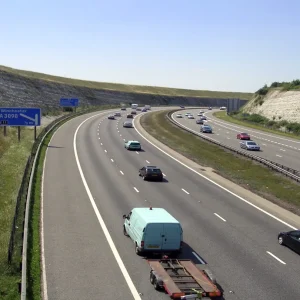
Inflation has been a defining economic force in recent years, affecting various sectors across the United Kingdom. One of the most impacted areas is the market for vans and light commercial vehicles (LCVs). These vehicles are crucial for numerous businesses, from logistics and delivery services to tradesmen and small enterprises. This article delves into the ramifications of inflation on the UK van and LCV market, examining key factors such as costs, supply chain disruptions, and changing consumer behaviours.
Understanding Inflation and Its Current Context
What is Inflation?
Inflation refers to the rate at which the general level of prices for goods and services rises, eroding purchasing power. It is typically measured by the Consumer Price Index (CPI) or the Retail Price Index (RPI). When inflation is high, every pound spent buys fewer goods and services.
Recent Trends in UK Inflation
As of mid-2024, the UK has been experiencing significant inflationary pressures. This surge is attributed to several factors, including the aftermath of the Covid-19 pandemic, Brexit-related disruptions, and global supply chain challenges. The Bank of England has taken measures to curb inflation, such as increasing interest rates, but the effects on various sectors, including the van and LCV market, are profound and multifaceted.
Cost Implications for Van and LCV Manufacturers
Rising Material Costs
One of the direct impacts of inflation on the van and LCV market is the increased cost of raw materials. Steel, aluminium, and plastics, essential components in vehicle manufacturing, have seen substantial price hikes. These increases are often passed down the supply chain, resulting in higher production costs for manufacturers.
Labour and Production Expenses
Labour costs have also risen due to inflation. With the cost of living increasing, there have been upward pressures on wages. This is especially pertinent in the manufacturing sector, where skilled labour is vital. Additionally, energy costs have soared, further inflating the overall expenses associated with vehicle production.
Impact on Vehicle Prices
As manufacturers grapple with higher production costs, the prices of vans and LCVs have inevitably increased. This has significant implications for businesses that rely on these vehicles. Higher acquisition costs can strain budgets, particularly for small and medium-sized enterprises (SMEs) that operate on tighter margins.
Supply Chain Disruptions
Global Supply Chain Challenges
The van and LCV market is not immune to the broader global supply chain issues. Components and parts are often sourced from various countries, and disruptions in one part of the world can ripple across the entire supply chain. The semiconductor shortage, for example, has had a notable impact on vehicle production worldwide, including in the UK.
Brexit and Trade Barriers
Brexit has introduced additional complexities to the supply chain. New customs procedures, tariffs, and regulatory changes have created delays and increased costs. For the van and LCV market, these barriers mean longer lead times and higher import costs, further exacerbating inflationary pressures.
Changing Consumer Behaviours
Delayed Purchases and Extended Use
With rising vehicle prices, many businesses are delaying new vehicle purchases and opting to extend the use of their existing fleets. This behaviour shift is driven by the need to manage costs more effectively amidst economic uncertainty. As a result, the demand for maintenance and repair services has increased.
Growing Demand for Used Vehicles
The used van and LCV market has seen a surge in demand. Businesses looking to avoid the higher costs of new vehicles are turning to second-hand options. This has driven up the prices of used vehicles as well, reflecting the broader inflationary trends within the market.
Shift Towards Leasing and Financing
To mitigate the financial burden of purchasing new vehicles, many businesses are increasingly considering leasing and financing options. This shift allows companies to manage their cash flow more effectively and avoid large upfront costs. Leasing provides the added benefit of regular vehicle upgrades, which can be crucial for businesses relying on efficient and reliable transportation.
Technological and Regulatory Influences
Emphasis on Fuel Efficiency and Electric Vehicles
Inflation has accelerated the push towards more fuel-efficient and electric vehicles (EVs). With fuel prices rising, the total cost of ownership for traditional internal combustion engine (ICE) vehicles has increased. EVs, while having higher upfront costs, offer lower running costs and are becoming more attractive in the long term.
Government Incentives and Regulations
The UK government has introduced various incentives and regulations to encourage the adoption of greener vehicles. These include grants for EV purchases, tax benefits, and stricter emission standards. Such measures are aimed at reducing the overall environmental impact and can help offset some of the inflationary pressures by lowering operational costs for businesses in the long run.
The Role of Financial Institutions
Access to Credit
In an inflationary environment, access to affordable credit becomes crucial. Financial institutions play a significant role in providing financing solutions to businesses looking to purchase or lease vans and LCVs. Interest rates, influenced by the Bank of England’s monetary policies, directly impact the affordability of these financial products.
Insurance Costs
Insurance premiums for vans and LCVs have also been affected by inflation. Higher repair and replacement costs lead to increased premiums. Businesses must factor in these additional costs when budgeting for their vehicle fleets.
Strategic Responses from Industry Players
Manufacturers’ Strategies
To cope with inflation, van and LCV manufacturers are employing various strategies. These include increasing efficiencies in production processes, exploring alternative materials, and investing in automation. Additionally, manufacturers are focusing on developing more fuel-efficient models and expanding their EV offerings to meet changing market demands.
Dealer and Retailer Adaptations
Dealers and retailers are adjusting their sales strategies to align with market conditions. This includes offering more flexible financing options, enhancing after-sales services, and leveraging digital platforms to reach a broader audience. By providing added value, dealers can better support their customers during inflationary times.
Supply Chain Optimisation
Supply chain optimisation is critical in mitigating the impact of inflation. Businesses are looking to diversify their supplier base, invest in local production, and adopt just-in-time inventory practices. These measures can help reduce dependency on single suppliers and minimise disruptions.
Future Outlook
Inflation Trends
While current inflationary pressures are significant, there are indications that they may moderate in the coming years. The Bank of England’s measures, along with global efforts to stabilise supply chains, are expected to gradually ease inflation. However, businesses should remain vigilant and continue to adapt to changing economic conditions.
Market Evolution
The van and LCV market is likely to continue evolving in response to both inflationary pressures and broader economic trends. Increased adoption of EVs, advancements in autonomous driving technology, and shifts in consumer preferences will shape the future landscape. Businesses that proactively embrace these changes will be better positioned to thrive.
Conclusion
Inflation has undeniably impacted the UK van and LCV market, influencing costs, supply chains, and consumer behaviours. Manufacturers, dealers, and businesses that rely on these vehicles must navigate a complex and evolving landscape. By adopting strategic measures, such as focusing on efficiency, embracing technological advancements, and leveraging financial solutions, industry players can mitigate the adverse effects of inflation and position themselves for long-term success. The ability to adapt and innovate will be crucial in ensuring resilience in the face of ongoing economic challenges.





